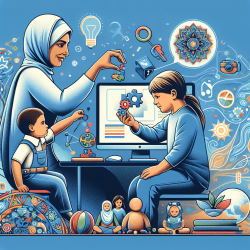Social skills are an essential aspect of human interaction, yet they often pose a significant challenge for individuals with Autism Spectrum Disorders (ASD). Addressing these challenges can significantly improve the quality of life for those affected. The Rochester Regional Center for Autism Spectrum Disorders has developed a self-study guide that utilizes the direct instruction method to teach social skills effectively.
The Importance of Social Skills Training
Social skills encompass a range of verbal and non-verbal behaviors that must be coordinated seamlessly. Individuals with ASD often struggle with this coordination, which can lead to difficulties in forming stable relationships and achieving social self-sufficiency. The direct instruction method offers a structured approach to teaching these skills, making it an invaluable tool in the repertoire of educators and caregivers.
Understanding the Direct Instruction Method
The direct instruction method is a systematic approach that involves several critical steps:
- Instruct: Introduce the skill and provide examples of its application.
- Model: Demonstrate the skill while explaining each step.
- Practice: Guide the individual through practice sessions, offering feedback and reinforcement.
- Feedback: Provide corrective feedback and reinforce correct responses.
- Application Exercise: Assign exercises to practice the skill in various natural settings.
This method ensures that each step is applied deliberately, allowing individuals to learn effectively. It is crucial to assess prerequisite skills and motivation levels before initiating training to tailor the approach to each individual's needs.
Developing a Social Skills Training Plan
A comprehensive training plan involves assessing an individual's existing social skills repertoire and identifying areas that require development. The plan should include:
- A two-phase training process: Skill Acquisition and Skill Application & Generalization.
- A detailed training format including individual or group settings, instructional materials, and reinforcement systems.
- An evaluation and progress monitoring plan to track performance and make necessary adjustments.
The success of this training hinges on continuous performance evaluation. Mastery is determined when an individual consistently demonstrates the skill with high accuracy across different settings and interactions.
Conclusion
The direct instruction method provides a powerful framework for teaching social skills to individuals with ASD. By following this structured approach, educators and caregivers can significantly enhance their ability to support those in their care. For more information on this topic, please follow this link.










